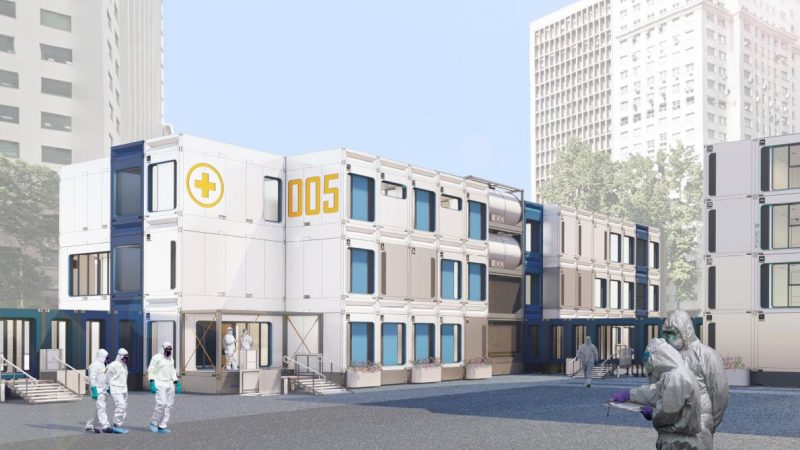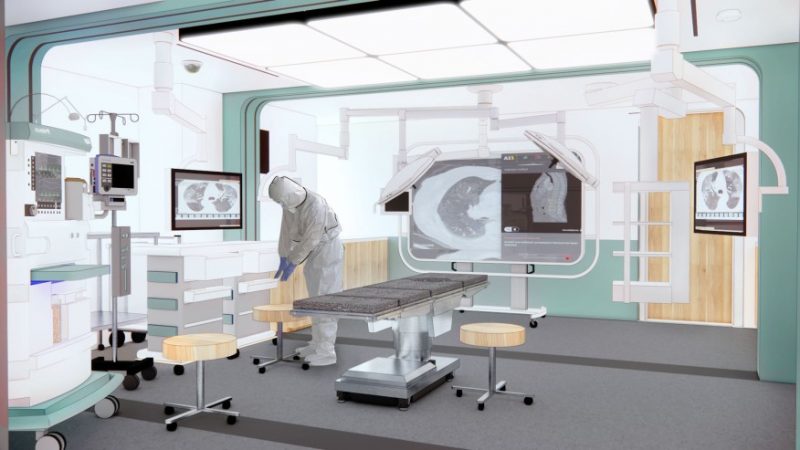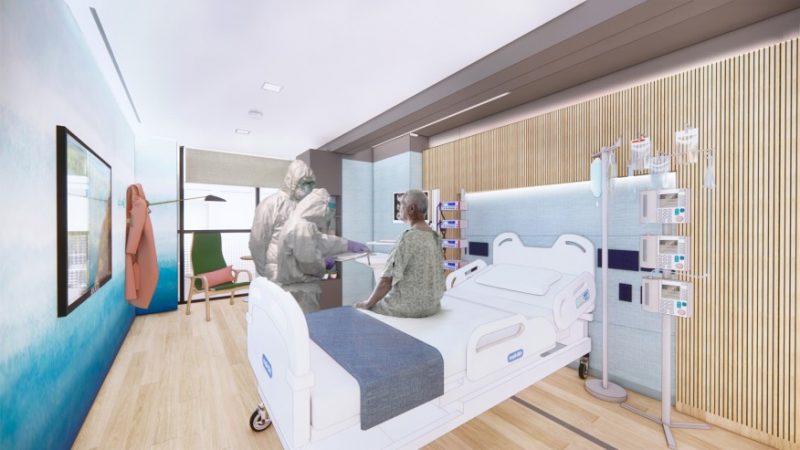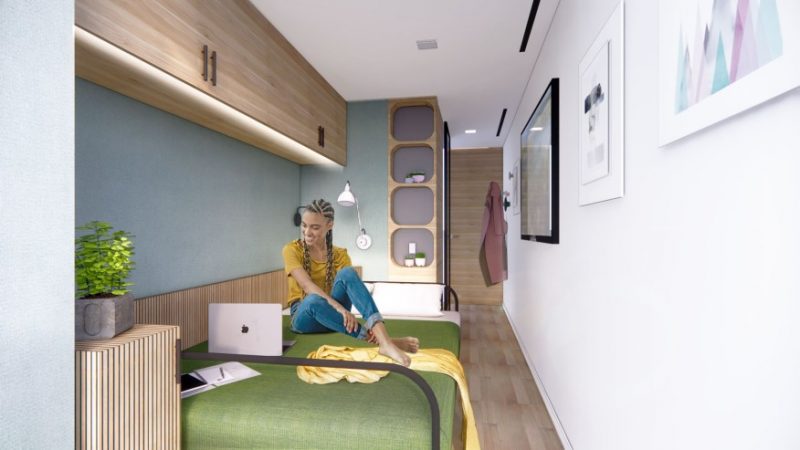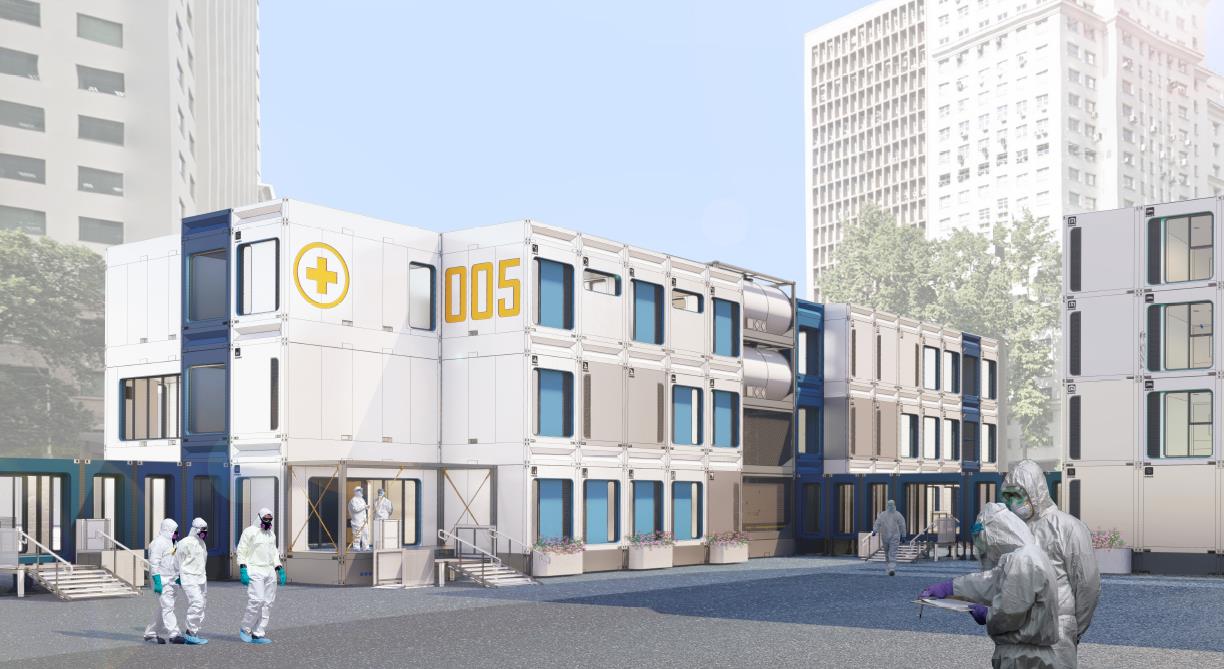
SUMMARY
While many have focused on how to mitigate the novel coronavirus (COVID-19) by planning measures to flatten the curve, reduce the spread of infection, and manage scarce resources, the USC/HLW-led team that created Project Héroe has taken a much more proactive approach. The team has designed a modular, state of the art, healthcare facility that can be quickly deployed at a potential epicenter to prevent a serious outbreak before it can build momentum and become a pandemic.
Designed around modular shipping containers that can be quickly deployed in environments ranging from inner cities to the rural countryside, the Project Héroe facility includes patient rooms and treatment spaces, staff housing, intake and triage, and support spaces. As a self-contained facility staffed by skilled epidemiologists, clinicians, and care-team members, Project Héroe can quickly intake, triage, and treat an infected population, reducing the spread of contagion and the subsequent significant loss of life and economic downturn of previous pandemics.
Led by the USC School of Architecture, the Keck School of Medicine of USC, and internationally-recognized architecture firm HLW, the Project Héroe team includes advisors from all aspects of medicine and the built environment. Vantage is the team’s technology and workflow advisor providing technology-focused consultation, ideas, and feedback to the project.
The Vantage team played several roles for Project Héroe. We provided visioning and future thinking surrounding clinical, information and low voltage technologies that could be deployed to support the mission. We participated in design workshops with the students working on the project to encourage ‘out of the box’ thinking and provide immediate feedback on ideas. We authored several of the technology sections of the report and provided additional backup and supporting information to the team.
BENEFITS
- A proactive, rather than reactive approach to addressing future pandemics based on science, medicine, and technology.
- An interdisciplinary project team included clinicians from USC Keck School of Medicine, assorted professionals from the design and construction industry, and graduate students from USC School of Architecture.
- Answers the question of “is there a built solution that can be implemented to stem a future outbreak of a similar virus?”
- “We’re not looking to get enriched—we’re looking to do good. It would be wonderful to one day say, “It was the architecture and building industry that came forward to really make a difference in the world.” – David Swartz, FAIA, HLW
SERVICES
- Technology Visioning
- Healthcare Technology Planning
EXPERTISE
- Audiovisual Systems
- Healthcare Technologies
- Distributed Antennae System (DAS)
- Emergency Notification
- Inpatient
- IT Infrastructure
- IT Systems
- Nurse Call
- Other Low Voltage
- Paging Systems
- Security Systems
- Telecommunications
- Wireless Networks
- Project Team Led by: HLW, USC School of Architecture, USC Keck School of Medicine
- Market: Healthcare
- Project: Project Heroe

